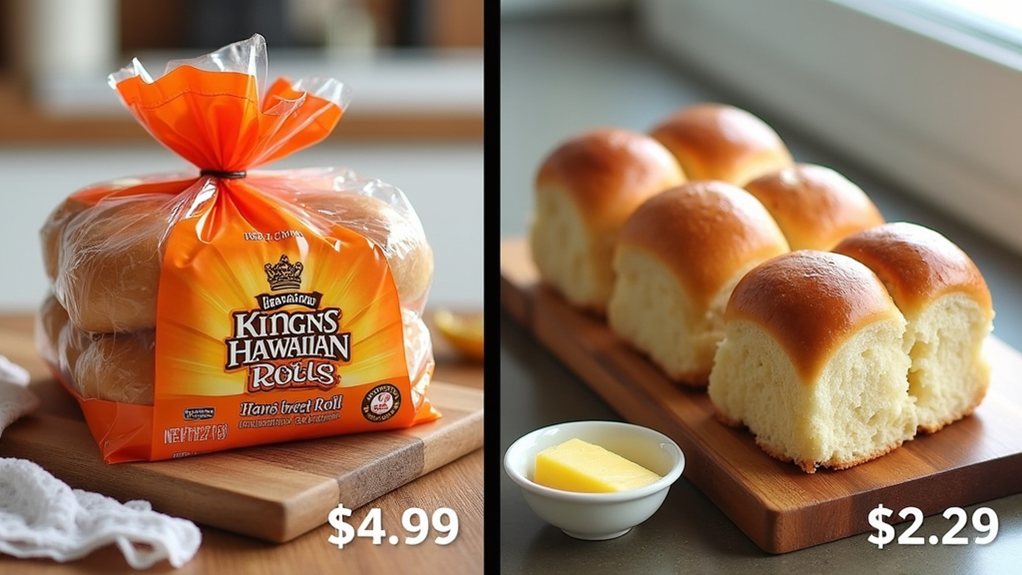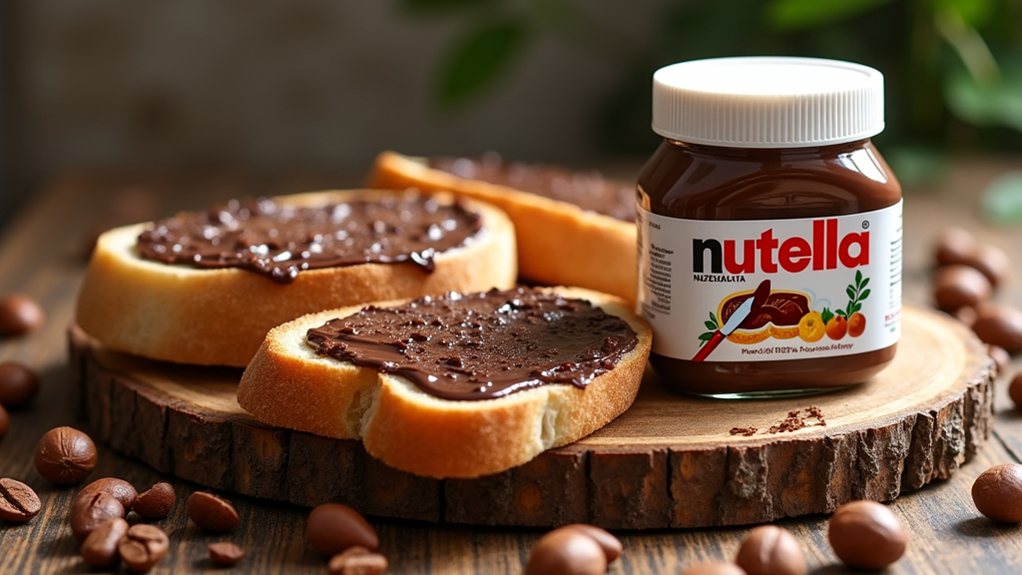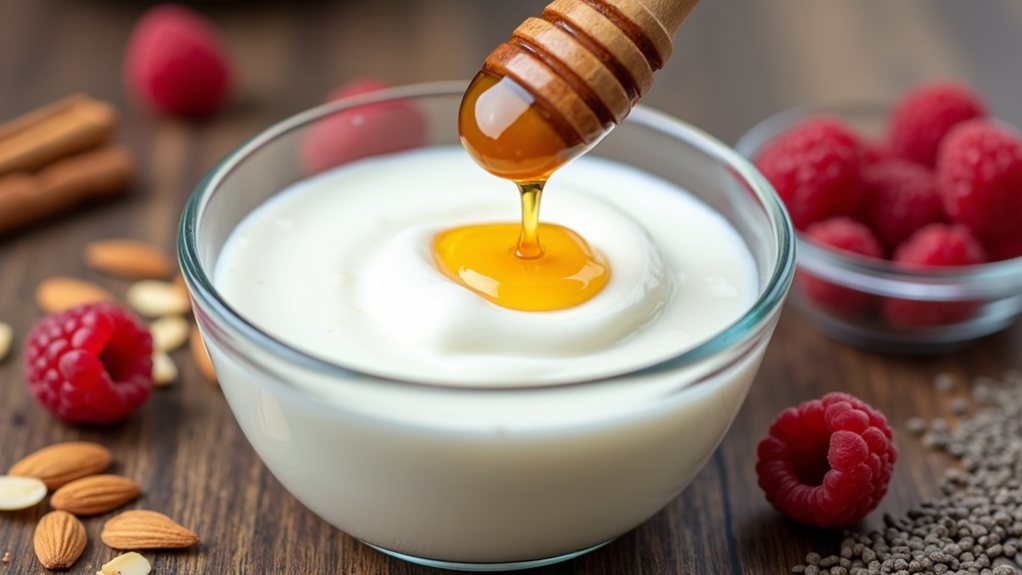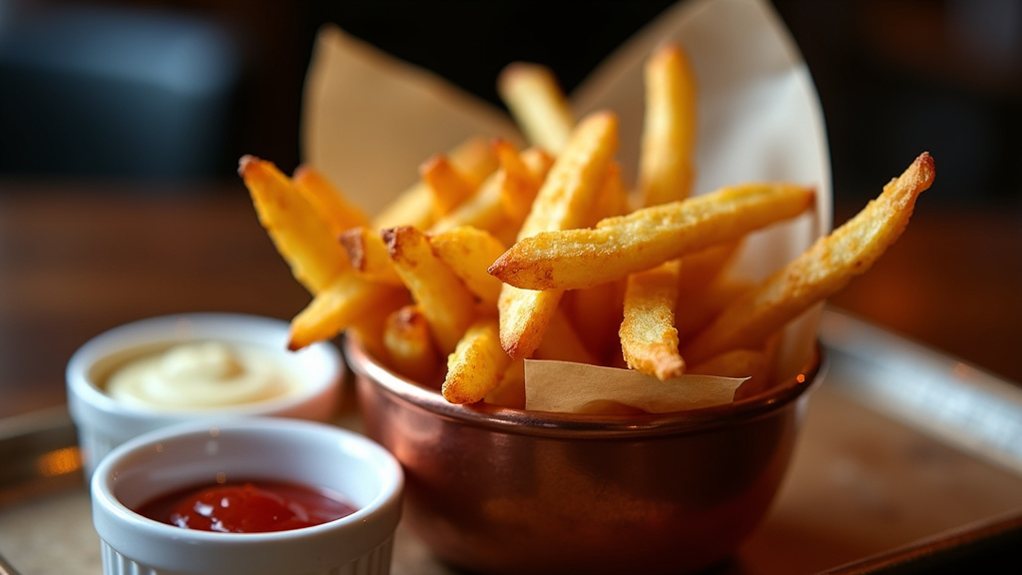The color of bell peppers significantly impacts their freshness and flavor. Green bell peppers, picked early, have a zesty taste and offer a longer shelf life, making them a practical choice. In contrast, fully ripened peppers—yellow, orange, and red—are sweeter and juicier, showcasing their advanced maturity. These vivid varieties not only enrich the taste of dishes but also provide greater nutritional benefits. To maintain freshness, store peppers in a sealed container, avoiding ethylene-producing fruits. Understanding how color influences freshness can optimize both culinary creations and enjoyment—there is much more to explore regarding the nuances of pepper varieties.
Green Bell Peppers and Freshness
Green bell peppers, a variety of Capsicum annuum, are harvested early, before they reach full maturity on the vine. This early picking contributes to their extended shelf life compared to more mature bell pepper varieties like red or yellow. Consequently, green bell peppers are not only budget-friendly but also a practical choice for consumers focused on food freshness during grocery shopping.
The distinctive green hue of these peppers signals a unique flavor profile, characterized by a slightly bitter and earthy taste. This makes them highly versatile in various savory dishes. In contrast, fully ripened bell peppers, such as red bell peppers, possess a sweeter taste due to their maturation process.
When shopping for green bell peppers, opt for firm, glossy specimens from brands like Dole or Green Giant, avoiding any with blemishes. Their extended freshness allows for longer storage, making them an excellent choice for those seeking sustainable and economical options. By understanding the freshness characteristics of green bell peppers, shoppers can make informed decisions, enhancing both their culinary experiences and food flexibility.
Enjoying Bell Peppers at Their Best
To fully enjoy the unique tastes and textures of bell peppers, it's crucial to eat them when they are freshest. Choosing firm, shiny bell peppers without blemishes ensures high quality. For the sweetest flavor, focus on yellow, orange, and red varieties, which should be consumed within a few days of buying. Their bright colors indicate ripeness and flavor potential.
In cooking, bell peppers are incredibly versatile. Crunchy bell peppers are perfect for salads or vegetable sandwiches, bringing a satisfying crunch. Grilling red, yellow, or orange bell peppers brings out their natural sweetness, resulting in a rich, charred flavor that enhances many dishes. Green bell peppers, with their earthy and slightly bitter profile, work well as a base when sautéed with onions, creating a tasty foundation for soups and stews.
Using different types of bell peppers in your meals not only elevates taste but also increases nutritional benefits. By enjoying bell peppers at their peak, you embrace the full spectrum of flavors they provide, enriching your cooking experiences while celebrating the vibrant bounty of these colorful vegetables.
Storage Tips for Bell Peppers
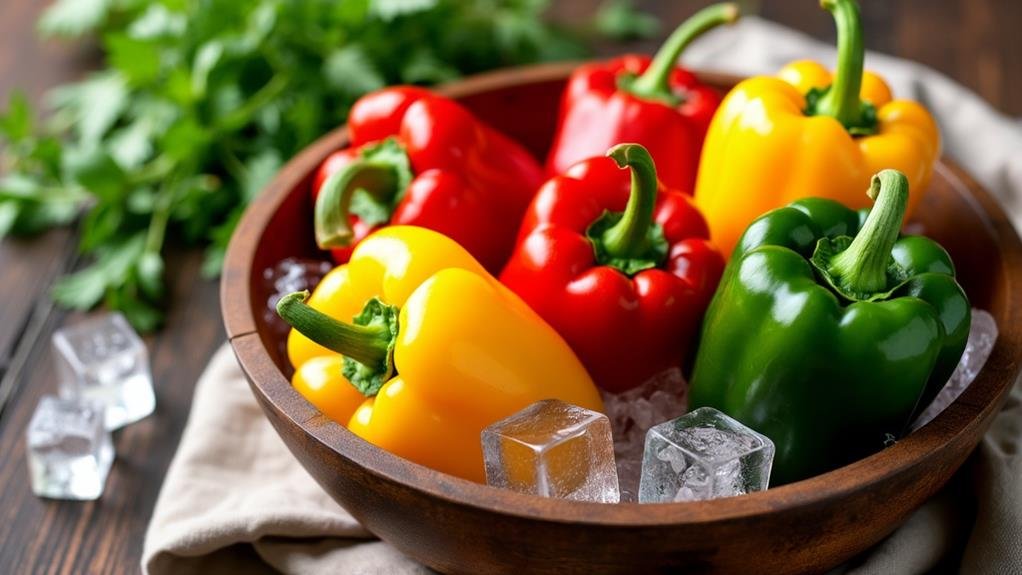
Proper storage is essential for maintaining the freshness and quality of bell peppers. Using effective techniques can significantly extend their shelf life, allowing you to savor their vibrant flavors for a longer period. Here are four key storage tips:
- Chill in a Sealed Container: Place bell peppers in a sealed container in the refrigerator. This will help retain moisture and reduce spoilage.
- Avoid Ethylene-Producing Fruits: Keep bell peppers away from ethylene-producing fruits such as Fuji apples and Cavendish bananas. These fruits emit ethylene gas, which speeds up ripening and can cause bell peppers to spoil faster.
- Quick Pickling Method: For enhanced longevity, quick pickle bell peppers using a vinegar and salt mixture. This technique not only preserves their freshness but also imparts a delicious tangy flavor.
- Freezing for Convenience: If you have surplus bell peppers, chop them and freeze for future culinary use in dishes like stir-fries or soups. This method preserves flavor and nutritional benefits while adding convenience to meal preparation.
Taste and Texture Variations
Bell peppers are a versatile ingredient that showcase a remarkable variety of taste and texture, enhancing their culinary applications. The differences among the colors are significant, influencing flavor profiles and mouthfeel. Green bell peppers, harvested before they fully ripen, present a tangy and earthy flavor. Their crunchy texture makes them ideal for salads or as a crisp addition to various dishes.
As bell peppers ripen, they become sweeter and juicier. For instance, red bell peppers are renowned for their sweetness, delivering a juicy flavor that enhances any recipe that benefits from a hint of sweetness.
Yellow and orange bell peppers occupy a middle ground, offering a sweet, slightly fruity taste that can elevate a wide array of culinary creations. These flavor nuances are not merely subjective; they shape the overall perception and enjoyment of a dish.
Recognizing these taste and texture distinctions allows cooks to make informed choices, optimizing the use of bell peppers. Each color contributes its unique flavor, making bell peppers an indispensable component in any kitchen, ready to satisfy a variety of palates and culinary needs.
Culinary Uses for Bell Pepper Colors

Recognizing the unique flavors and textures of various bell pepper colors enhances culinary creativity. Each hue presents specific qualities that can elevate a dish's overall flavor, making bell peppers versatile ingredients in the kitchen.
- Salads and Sandwiches: Varieties like yellow, orange, and red bell peppers introduce vibrant hues and sweetness to salads and veggie sandwiches. Their crisp texture pairs well with other components, creating visually appealing and flavorful dishes.
- Grilling: When grilled, the natural sugars in sweeter bell pepper types caramelize, producing a delightful charred taste that enhances the overall flavor profile of any meal.
- Sautéeing: Green bell peppers, known for their slightly bitter and earthy notes, create a robust base when sautéed with onions. This combination enriches soups, stews, and stir-fries, adding depth to the dishes.
- Marination: Bell peppers marinated in vinaigrette develop a tangy sweetness, serving as toppings for various dishes or as elements in antipasto platters, showcasing their versatility.


